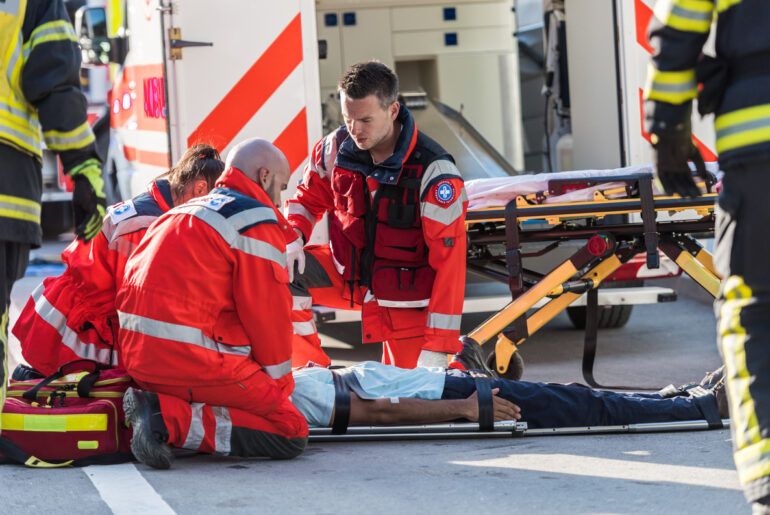Throughout the country, Emergency Medical Technicians (EMTs) stand by to answer calls for help. EMTs safely transport patients from the scene of emergencies to medical facilities. They have the basic knowledge and skills needed to stabilize patients, and perform interventions as needed with ambulance.
But how do you become one? We decided to take a closer look at the roles and responsibilities of EMTs.
The basics
EMTs are part of a network of Emergency Medical Service (EMS) providers that answer the emergency calls placed by civilians in need. According to ems.gov, “EMS is an intricate system, and each component of this system has an essential role to perform as part of a coordinated and seamless system of emergency medical care.”
EMS providers must receive formal education and training, in addition to acquiring a license or certification from the state in which they intend to gain employment from. Most states grant licensure or certification, in part, based on achievement of national certification by the National Registry of Emergency Medical Technicians (NREMT). Check with your state’s EMS agency to determine the requirements for licensure or certification that apply to you.
There are four different levels of EMS certification:
- Emergency Medical Responders (EMRs)
- Emergency Medical Technicians (EMTs)
- Advanced Emergency Medical Technicians (AEMTs)
- Paramedic
What is an EMT?
According to the National EMS Scope of Practice Model , EMTs “provide basic emergency medical care and transportation for critical and emergent patients who access the emergency medical system” and “perform interventions with basic equipment typically found on an ambulance.”
EMTs serve as a link, ensuring continuous care for the patient from the scene of the emergency to a hospital or other health facility.
EMTs can perform the following tasks:
Insert oropharyngeal airway adjuncts
Use positive-pressure ventilation devices such as the bag-valve mask
Suction the upper airway
Administer supplemental oxygen therapy
Use an automated external defibrillator (AED)
Manually stabilize a client with a suspected cervical spine injury
Manually stabilize an extremity fracture
Control bleeding
Perform emergency moves
Insert nasopharyngeal airway adjuncts
Use positive-pressure ventilation devices, such manually triggered ventilators and automatic transport ventilators.
Assist patients in taking their own prescribed medications
Administer over-the-counter oral glucose for suspected hypoglycemia and aspirin for chest pain of suspected ischemic origin
Apply and inflate a pneumatic anti-shock garment for fracture stabilization.
Think a career as an EMT may be for you? Check out the infographic below for detailed information on the EMT-Basic Certification Process.
Need helping preparing for the EMT-Basic Certification Exam? We can help with that. Create a personalized study plan to keep yourself accountable with a subscription to Peterson’s Test Prep.




